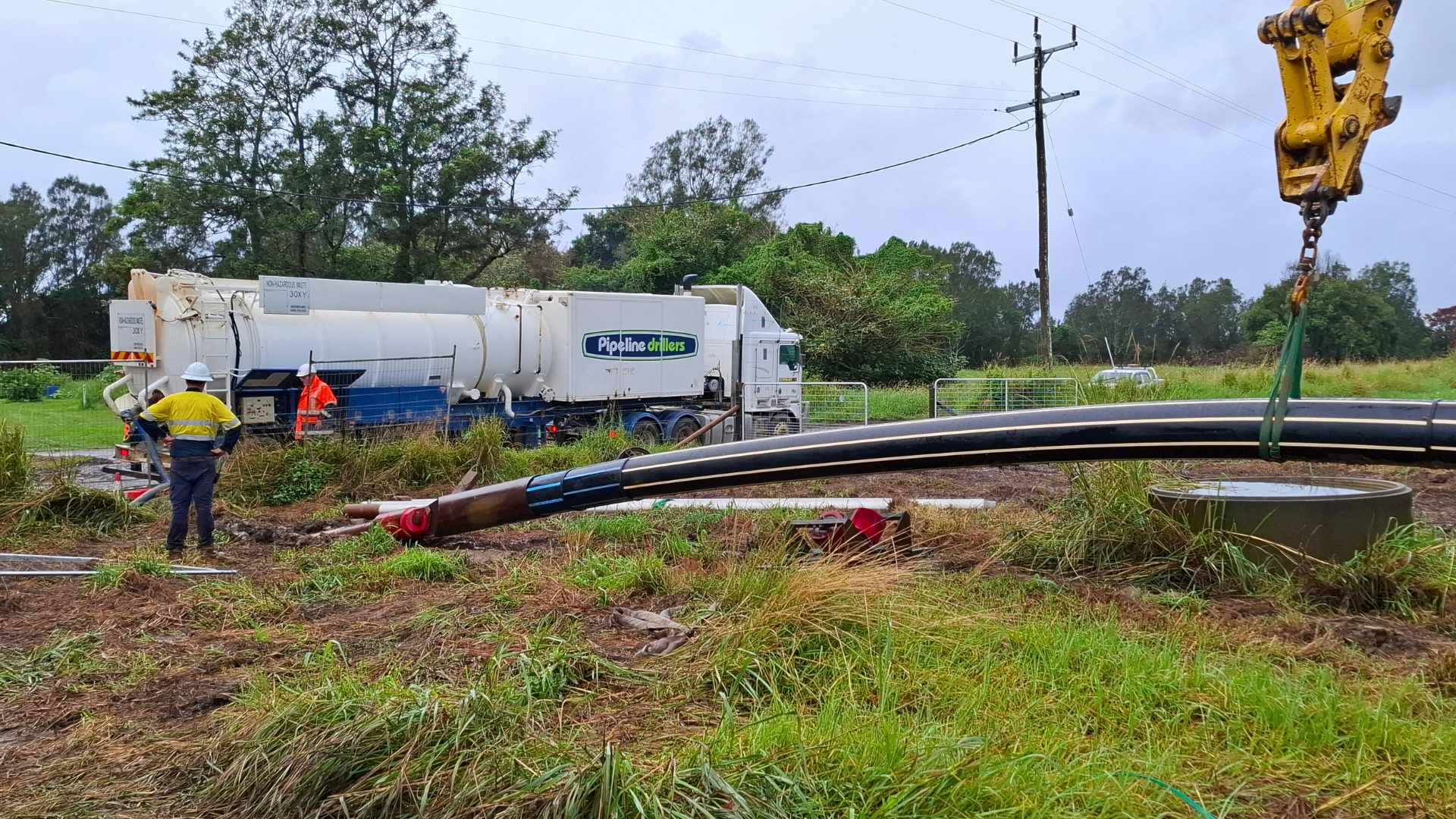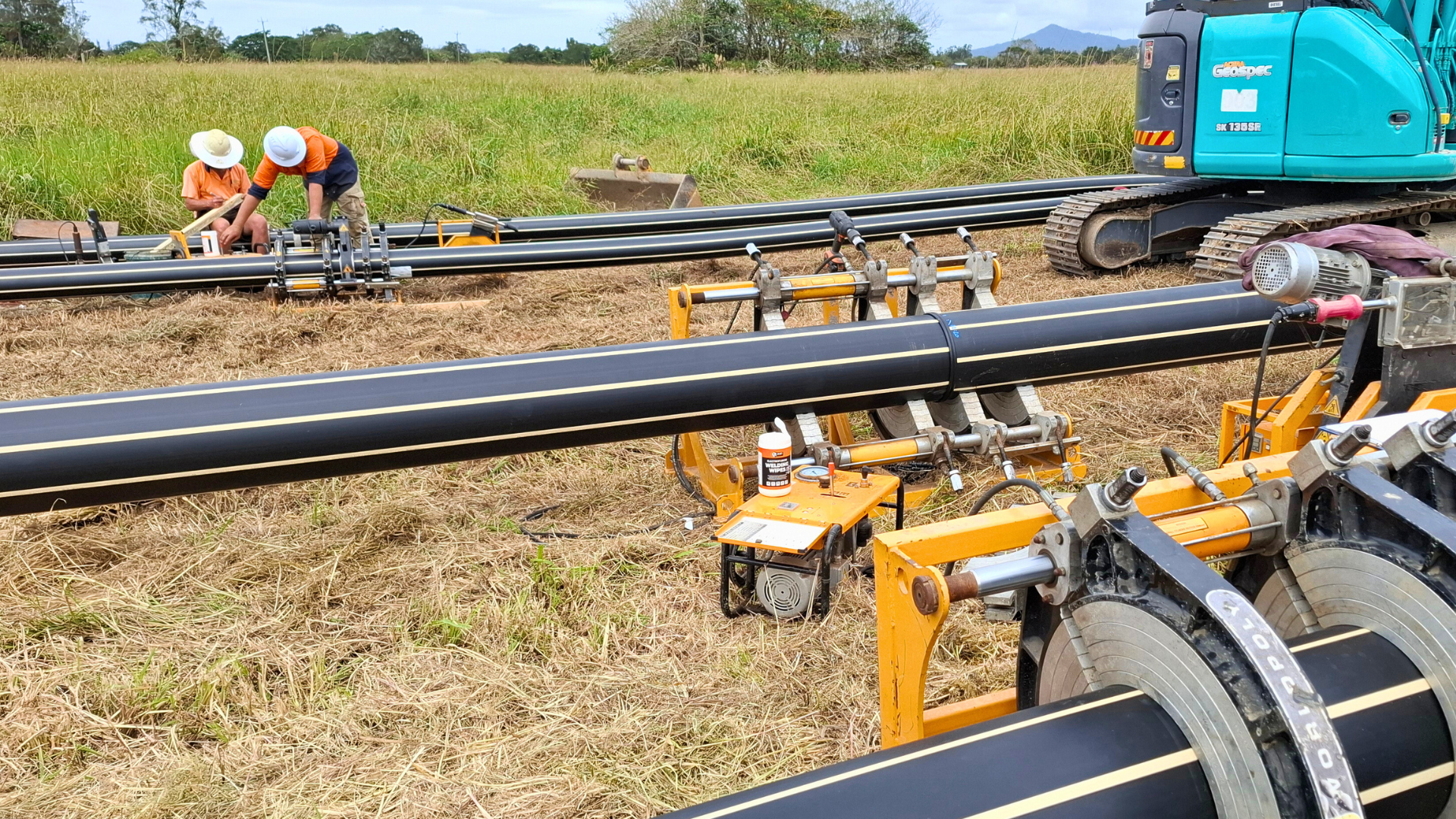MEDIA RELEASE ISSUED BY DEPARTMENT OF CLIMATE CHANGE, ENERGY, THE ENVIRONMENT AND WATER (3 APRIL 2025)
Major construction is underway on the second stage of a $38 million project that will extend Bellingen Shire’s sewerage network into more communities, giving them access to modern, environmentally sustainable sewerage services for the first time.
The landmark Sewering Coastal Villages Project is funded thanks to more than $11 million from the NSW Government’s Safe and Secure Program and over $27 million from Bellingen Shire Council against its long-term financial plan to deliver an upgraded sewage treatment plant in Urunga and provide Mylestom and Raleigh with access to the central network.
Ledonne Construction was engaged by Council through a competitive tender process for major river, rail and road crossings. This work has now commenced as part of Phase 2, including the underbore of the Bellinger River, in preparation for 226 connections in Mylestom and Raleigh to the Urunga Sewage Treatment Plant.
Bringing these villages onto the wastewater network will reduce the need for on-site septic tanks that pose a risk to the iconic Kalang and Bellinger Rivers that have experienced contamination incidents in the past.
Work on upgrading the wastewater plant began last year to double its capacity to cater for up to 10,000 people and increase the facility’s lifespan by 30 years, equipping it to handle future population growth.
Work on the plant is expected to be completed later this year while the rollout of the sewage network is on track to be finished by early 2026.

NSW DCCEEW Executive Director Infrastructure Development Lisa Hingerty said:
“This is one of the biggest investments in sewage services for Bellingen Shire and connecting Mylestom and Raleigh to the sewage network is great news for residents.
“Many locals in these coastal villages are reliant on smelly and expensive private septic tanks for their wastewater disposal which is why getting them hooked up to the upgraded wastewater treatment plant will be a game changer.
“Not only is this a big win for the environment by safeguarding pristine waterways, but it’s also a big win for residents and businesses who will enjoy improved livability by having access to modern sewerage disposal for the first time, eliminating the burden of having to pay for the ongoing maintenance of their own wastewater systems.”

Bellingen Shire Council Mayor Cr. Steve Allan said:
“The installation of these pipelines through major town infrastructure marks our most significant milestone yet for the project, as we methodically move towards the connection of our coastal villages to the sewerage network.
“Contamination in the Bellinger and Kalang Rivers can potentially impact public health, wetlands and local businesses which is why we’re transforming the wastewater system here to reduce that risk and keep these waterways beautiful.
“We’re focused on working hand-in-hand with the NSW Government to get these significant upgrades done and we’ll continue to keep the community informed with updates as construction continues to progress.”